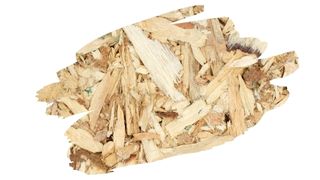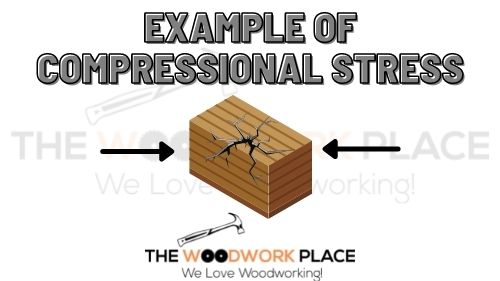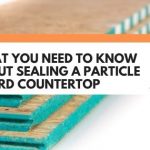Floors need to be made from strong sturdy material that can handle load-bearing stress. And, that material also needs to be good at shrugging off water spills, moisture, and humidity.
So, natural solid durable woods, such as Oak, wholly fit the bill as a hardwood floor. But, what about a manufactured wood such as Particle Board?
Well, in this post, you’ll learn which type of manufactured wood is your best choice for flooring. You will also discover why Particle Board should not be used as flooring in your bathroom or kitchen.

This post may contain affiliate links to products that we receive a commission for (at no additional cost to you). Learn more here.
What The Best Type Of Manufactured Wood For Flooring?
The simple answer to this is plywood.
Plywood is strong and easy to work with. And, if you purchase exterior graded plywood, it is durable too.
In fact, exterior graded birch plywood is sometimes called ‘structural plywood’. And this is thanks to it’s extra plies and water-resistant adhesives.
Related Post: A Quick Beginners Guide To BCX Vs RTD Plywood
Also, when it comes to floors, plywood has twice the strength of alternative manufactured woods, such as OSB.
That is because plywood has immense compressional strength. Which means that it can take on significant downward load pressure without collapsing in on itself.

Can You Use Particle Board For Flooring As Well?
You can, but it tends to be used as underlayment, not as a floor.
Underlayment is the material placed between the subfloor and floor. And the general job of underlayment is to provide insulation and soundproofing.
And What’s The Purpose Of Using Particle Board For Underlayment?
Decades ago, Particle Board was popularly used as underlayment simply because it was affordable.
On top of that, Particle Board is a better insulator than solid hardwood alone. And, for a manufactured wood composite, it has some soundproofing qualities too.
So Can You Use Particle Board Under Vinyl Or Laminate Flooring?
In theory, there’s nothing stopping you. Particle Board is a firm material that won’t shift around, the way newly installed hardwood floors can.
Related Post: Do New Hardwood Floors Need To Settle? (Explained!)
Having said that, in practice, you’re much better off looking elsewhere for flooring material.
What Kind Of Flooring Can You Put Over Particle Board? Particle Board underlayment is best paired with laminate or vinyl flooring.
That’s Great! But Let’s Be Honest Here…Are There Any Disadvantages To Using Particle Board This Way?
Yes, there are many problems with using Particle Board as part of your flooring.
But, most of those problems stem down to the fact that Particle Board is too easily water-damaged. And this material will absorb moisture at the drop of a hat.
What’s more, once Particle Board does become water damaged, that’s pretty much the end of that. You will struggle to fix the water damaged sections of Particle Board, forcing you to throw it out.
And what happens if you don’t throw out those damp damaged sections? Well, that brings other problems relating to mold, decay, and structural integrity.
Plus, it’s not like Particle Board has much structural integrity to it in the first place. Especially since it is no where near as strong, or as rigid, as plywood.
Related Post: What Is The Best Type Of Plywood For A Van Floor? (Solved!)
Does This Mean That Particle Board Floors Can Mold Easily?
Yes, especially when used in a room that’ll have a lot of steam or water splashed about, such as the kitchen or bathroom. Particle Board will start to mold in these kind of damp conditions.
At best, you can treat moldy Particle Board with fungicides. But, unless you throw out damp Particle Board altogether, that mold will be there to stay.
What Does This Mean For My Dreams Of Saving Money With Particle Board Flooring?
Using Particle Board to save money on floor installation is pretty much the textbook definition of the term ‘false economy’.
You will save money in the short run. However, over the long run, it’s going to cost you a lot more maintaining that easily damaged Particle Board floor.
To Wrap Up, Here Are The 3 Key Takeaways From This Post…
- 1). Compared to plywood, Particle Board is a poor choice for flooring or underlayment.
- 2). Particle Board is easily water-damaged. And in high humidity environments, such as the kitchen or bathroom, it can fast succumb to mold and decay.
- 3). A better option for flooring is exterior graded plywood. Plywood has better compressional strength, (and water-resistance), than Particle Board.



